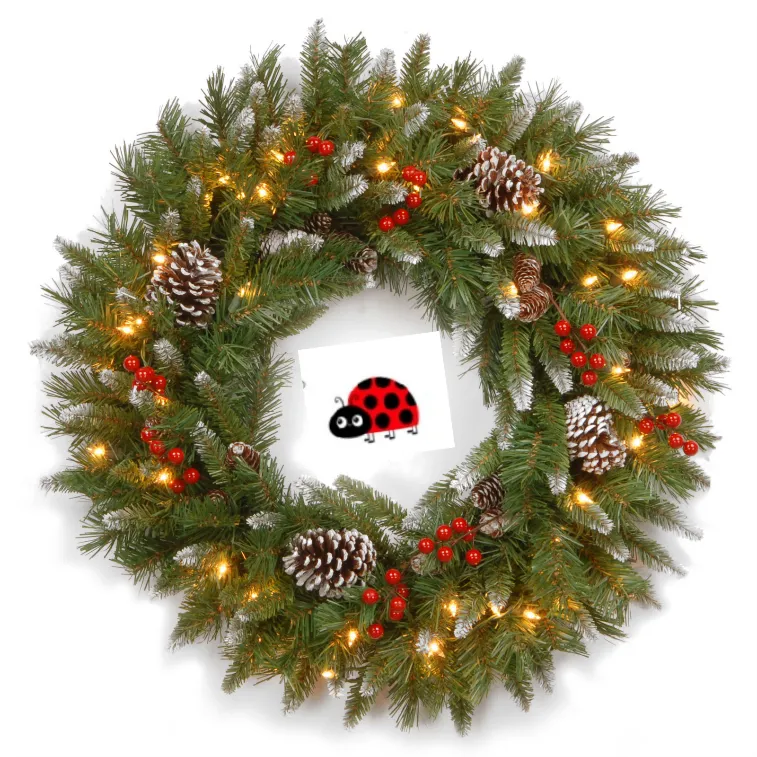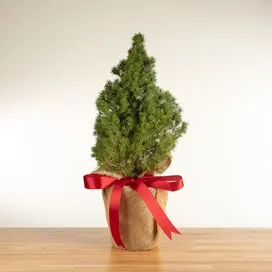20 Dec Avoiding Unwanted Holiday Pests
And, I’m not talking about boisterous Uncle John either. When I was younger, the holidays were my favorite time of year. We had tall pine trees in our yard and I would love to gather pine cones to decorate, painting them gold. I would also gather branches from a tall, what I would call, our Christmas tree. I would love to make wreaths and decorate our mantle intermingled with red ribbon. Until one year, my mom noticed bugs that she swore came in via my branches. That was the end of that.

Here are some tips to avoid bringing in unwanted holiday pests:
From USDA
The holidays are a festive time, filled with traditions. Putting up a Christmas tree, wreath, and ornaments may be part of your tradition. But, look twice before you acquire fresh plant material for your seasonal décor. There may be something lurking inside. Invasive plant pests and diseases are talented hitchhikers. They may hitch a ride on your live Christmas tree, wreath, or handmade ornaments. And, they aren’t just unwelcome guests—these pests have the ability to threaten local ecosystems and agriculture when introduced to new places.

Untreated Firewood is another a culprit for hitchhiking pests such as cockroaches, spiders and mites.
Tree-killing insects
Our forests are at risk. If you move fresh plant material from a quarantine area, you could transport tree-killing insects without seeing them. Hungry pests are invasive species that threaten to harm our crops and trees. Left unchecked, they can devastate entire agricultural industries, eliminating jobs, threatening our food supplies and costing in the billions.
It’s up to each of us to be sure that we’re not packing a pest when we move things outdoors, go camping, or travel internationally. Please do your part and be aware of any regulations and potential risks in your area. And if you see a pest, report it. They will probably tell you to bag it up immediately and take it outside to your garbage can.
Egg masses
Outdoor items can also harbor egg masses, which can look like dry mud or tan-colored fuzzy patches on surfaces. The culprit could be an invasive pest that feeds on and defoliates hundreds of plant species.

Just Be Aware
For many of us, “holidays” means heading out to storage buildings, basements or attics to retrieve holiday decorations. Occasionally, these decorations can also harbor uninvited holiday guests. We can unintentionally bring many pests indoors on decorations or in their boxes. Brown recluse spiders, silverfish, cockroach egg cases, Asian lady beetles, stink bugs, and even rodents and their droppings can be brought in.
If the decorations are or were food based, stored product pests such as meal moths or beetles can be present. Live plants such as greenery or poinsettias, and hay bales or other living or dead plants, can also carry pests.
The best way to avoid problems with these unwanted guests is to properly store holiday decorations and carefully check them before bringing them into your home.
- Inspect all holiday décor before bringing it in the house
- Unpack boxes and bags outdoors
- Shake out any items outdoors to dislodge any potential pests
- Store items in hard plastic containers or bins with a sealable lid which are more difficult for pests to access
- Food or animal based items, such as papier-mâché, wool, seeds or garlands should be stored sealed in plastic bags or other sealable containers
- Avoid storing items in cardboard boxes; they are great homes for pests. Rodents can easily chew through them, and they don’t last well in humid or very hot environments
- If you choose to bring in living plants, trees or greenery, inspect them carefully for any pest activity, especially deep in the branches and at the trunk of trees or main stem of plants
Time to Take the Tree Down
It’s definitely more fun putting the tree up than it is taking it down, but all good things must come to an end. Holiday cleanup sadly ends with the unhappy task of ditching your evergreen decor. There are other ways to dispose of your tree, besides what most of us do and just put it out for the garbage crew to remove it. If you do this, you should place it as far from your home as possible to avoid attracting pests to your property. These pieces of live greenery can attract mice, rats, and other pests looking for harborage sites during the winter.
How do you dispose of an old Christmas tree?
Break off the needles, cut the branches into small, 1 or 2-inch pieces and use as mulch. Or you can entire limbs to cover your garden beds, which reduces frost heaving by insulating sensitive plants, like roses. Something we don’t have to worry as much about in Florida.
Can you compost an old Christmas tree?
Absolutely! They make an excellent base for your compost pile. If your greenery appears to have been pest-free, it is fine to compost, but if over the holiday season it becomes obvious that there is a pest present, the greenery should be bagged and disposed of with the regular trash. And, don’t forget to remove all your decorations!

And, now the good news – you can help prevent their spread:
- Before buying holiday greenery, inspect it for signs of infestation including insects, egg asses, masses, tunneling or holes.
- Buy local or use certified heat-treated firewood, or gather it on site where permitted. Don’t move untreated firewood.
- Do not move plants, fruit, vegetables, or soil into your state or another state unless agricultural inspectors have cleared them.
- Check out APHIS’ interactive maps and pests tracker to familiarize yourself with quarantines in your area. Avoid moving quarantined materials.
Protect plants this holiday season. Visit www.aphis.usda.gov/aphis/resources/pests-diseases/hungry-pests/hungrypests to learn more.
Look what happened in South Dakota 2 years ago:
Invasive pest found on Christmas wreath and greenery | Agweek

Sorry, the comment form is closed at this time.